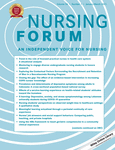Teaching nursing quantitative analysis with the integration of Andersen's framework
Abstract
Educators are challenged to engage in dramatic reformation and innovation including learning, teaching, and curriculum design. A PhD level quantitative nursing research course was redesigned using the Andersen Behavioral Model of Health Services (ABMHS) to guide data assignments. Students navigated through levels of theoretical abstraction from constructs to concepts to variables. Subsequent assignments offered students the opportunity to operationalize, code, and manage the variables in their models. Outcomes were positive and resulted in student confidence as they progressed to the dissertation phase. This article adds novel information to the literature about attention to theory, models, or frameworks, and specifically the ABMHS, in a doctoral quantitative course.
CONFLICT OF INTERESTS
The authors declare that there are no conflict of interests.




